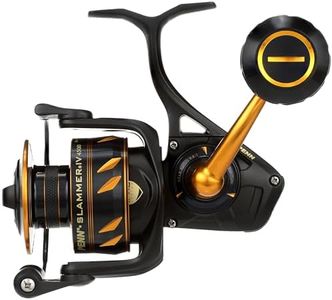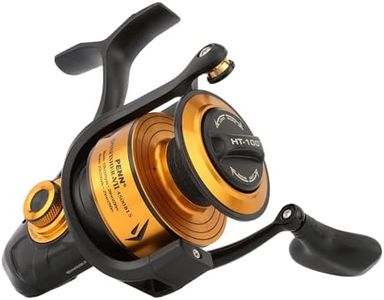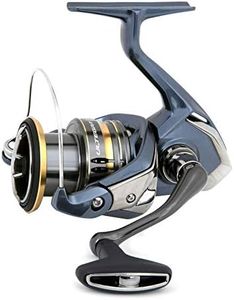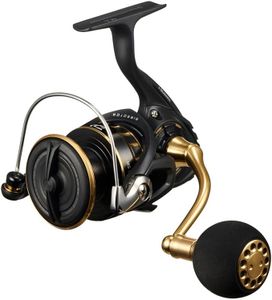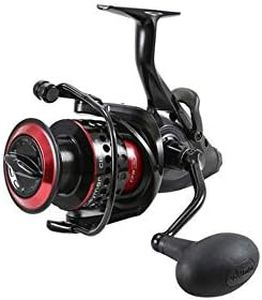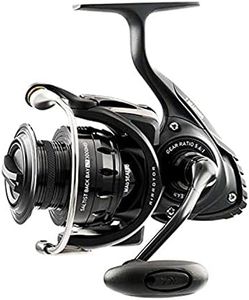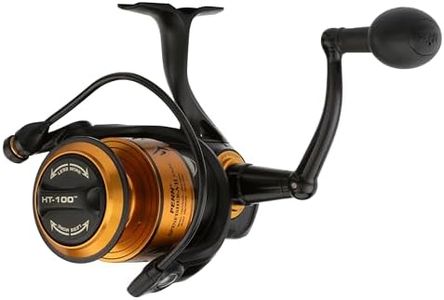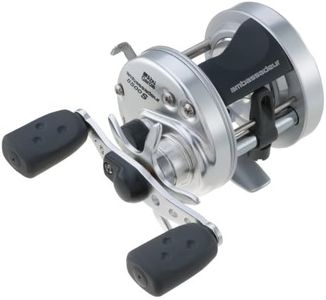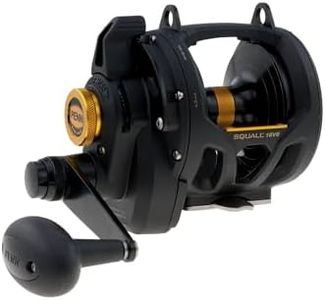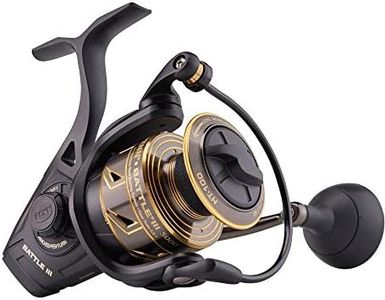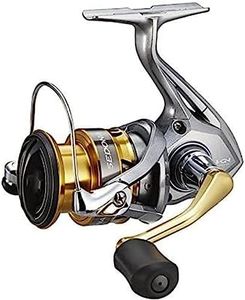We Use CookiesWe use cookies to enhance the security, performance,
functionality and for analytical and promotional activities. By continuing to browse this site you
are agreeing to our privacy policy
10 Best Saltwater Reels
From leading brands and best sellers available on the web.By clicking on a link to a third party's website, log data is shared with that third party.
Buying Guide for the Best Saltwater Reels
Choosing the right saltwater reel can make your fishing experience more enjoyable and productive. Saltwater environments are tough on gear, so it’s important to pick a reel that’s durable, easy to use, and matches the type of fishing you want to do. Start by thinking about the kind of fish you want to catch, the fishing methods you prefer, and the conditions you’ll be facing. Once you know your needs, you can focus on key features that influence performance and longevity.Corrosion ResistanceCorrosion resistance refers to the reel’s ability to withstand saltwater, which can cause rust and damage. This spec is essential because saltwater is much harsher on equipment than freshwater. Manufacturers achieve corrosion resistance by using materials like anodized aluminum or sealed stainless steel components. Some reels have special coatings or sealed systems to protect internal parts. If you fish inshore occasionally, a reel with basic protection may do. For frequent offshore or surf fishing, opt for high-grade corrosion resistance to ensure your reel lasts longer.
Drag SystemThe drag system controls how much resistance a fish feels when it pulls on your line. This is important because it lets you fight fish effectively without breaking your line. Drag ratings range from light (around 5-10 lbs) to very heavy (30+ lbs). If you target smaller species, a lower drag is sufficient, but for big game like tuna or tarpon, you’ll need a strong, smooth drag that can handle powerful runs. Always look for a drag that operates smoothly and can be adjusted precisely.
Line CapacityLine capacity tells you how much fishing line (and what strength) the reel can hold. This matters because saltwater fish often make long runs. Reels are marked with line capacity for both monofilament and braided lines, usually in yards or meters for a given line weight. For inshore fishing, less capacity is fine, but if you fish offshore or for larger species, pick a reel that can hold a lot of heavier line so you don’t run out during a big fight.
Gear RatioGear ratio describes how many times the spool rotates with one turn of the handle. It affects how quickly you can reel in line. Low gear ratios (around 4:1) give you more power for pulling heavy fish but are slower. High gear ratios (around 6:1 or higher) retrieve line faster, which is good for fast-moving fish or lures. Choose a lower ratio for battling big, strong fish and a higher ratio for quick retrieves or lighter species.
Reel Size and WeightThe size and weight of a reel affect comfort and balance when matched with your fishing rod. Larger reels are heavier but hold more line and have stronger drag systems, suited for bigger fish and tougher conditions. Smaller reels are lighter and easier to handle for inshore fishing or all-day use. Pick a size that feels comfortable for you and matches your typical rod and target fish.
Ball BearingsBall bearings help the reel operate smoothly and affect how easily it cranks. More bearings generally mean smoother performance, but their quality matters more than the number. Reels for saltwater need sealed or shielded bearings to keep out salt and debris. If you want silky-smooth operation and plan to use your reel in rough conditions, look for reels with quality sealed bearings.
Spool DesignThe spool holds your line and affects casting distance and smoothness. Wide, shallow spools are great for lighter lines and longer casts, while deep spools can hold more heavy line for bigger fish. Some spools are braid-ready, meaning you don’t need a backing line. If long casts are important to you, look for a spool designed for distance; if you need lots of line for deep sea fishing, pick a deeper spool.
